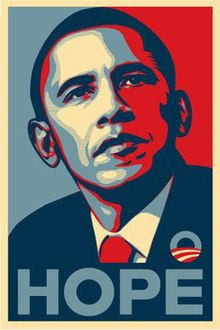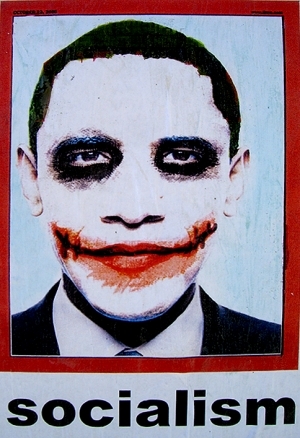I watched Barry Lyndon today and was quite taken aback by the way Stanley Kubrick mimicked the style of the paintings of the era. I was told that you were supposed to use light to create a sense of depth, but Barry Lyndon eschews this and does the obverse, flattening the image to create the sense of a two-dimensional canvas. I tried to highlight this by vulgarly applying the "oil painting" filter in Photoshop. Don't they look just like paintings?
Saturday, May 4, 2013
Wednesday, December 12, 2012
Fireside Chat
Artist's Statement
Mark Romanek once said, in reference to an interview given by Kubrick, that the best way to describe good art was that it had to be "more daring and more sincere." I feel like our class was able to fulfill both of these criteria on this night, and the spirit was not just one of empathy and pity, but one of appreciation. I feel like there are some good artists in this class.
Initially I wanted to tell a ghost story I had heard on the internet, because it was very scary and disturbing, and there's a malicious impulse in me that likes to see people squirm at what I can make or perform. However, I decided to change my story at the last minute and stayed up until the sun rose writing something on a scroll that I would then read out. I feel like this was a good change, as the end result was much more sincere, and much more daring, and hopefully still made people squirm in a conversation that speaks of the grand importance of human life and one's fellow man. The story was completely true and really did happen to me when I was ten and a half, and every detail is exactly as I remember it - I made a conscious decision to write in a journalistic and literal sense, enveloping the event with small and uninterpreted details. I feel like this compounded the effect of the story and helped make it feel less like a story. The transition to the present was accompanied by a transition in style - I wrote more in verse than I did in the stream-of-consciousness diary entry of the childhood perspective. The ending was written in the third person to relate the idea that I needed something external and greater than myself to reassure me and comfort me, this being the belief aspect of the assignment.
I really enjoyed this assignment and I really enjoyed the work of my peers, and I feel like it was an uplifting experience that benefited everyone that participated. I feel like I over-shared, but I'm okay with that, and I feel like it was worthwhile.
Thanks for this class.
Tuesday, December 4, 2012
Assignment Suggestions
When looking back at art and film through a scholar's lens, we often categorise the various periods and style changes as genres or movements - some of these arose fluidly and naturally, whilst others were constructed and deliberately formed. Art movements offer a unique opportunity to be a part of a creative community with a unified goal, but with different and personal manifestations of that goal.
Create a Genre:
Working in groups of 4, you will meet and discuss the creation of a new genre, micro-genre or art movement. Define your objectives, your worldview, your collective aesthetic, your choice of medium and what makes you distinct as a new art movement. Draw up a manifesto, or forgo one if your movement calls for it. You can draw from an existing culture to create a subculture or counter-culture, or you can be entirely original. Working individually, but consulting one another, each member of the group will create a piece of art in whatever medium suits your movement, which you will present to class in tandem with your group.
Example: The Seapunk micro-genre was created as a joke by a loosely assembled group of Tumblr users and the internet personality @Lil_Internet. Its aesthetic has since become co-opted by popular rappers and performers Azealia Banks and Rihanna in recent performances, and the style has been adopted by Lady Gaga and Taylor Swift, among others.
We've explored the artistic process in our class, but we have yet to analyse the specific ways that media can directly effect a viewer. Propaganda can be used for good or for ill, for corporate or political or even humanitarian aims - we will be discussing the latter in the assignment.
Propagandhi:
Students will find and research a humanitarian cause - the positives and the negatives, the counter-arguments and the benefits. They will then decide their stance on the cause, and create a piece of propaganda that will influence the viewer towards making a direct change in regards to the humanitarian issue. It could be as simple as a poster or as complex as a stickerbomb or documentary. The student will then post or display it in a public space (without breaking laws) and gauge the reaction of the viewers. Your goal is to manipulate or change your viewer in some way.
Example: Shepard Fairey's work is heavily informed by propaganda, which reached a peak with his famous Hope poster for Obama's campaign - another artist made a detracting statement using a similar method, and both artists influenced their audience effectively. How can we make images that are powerful enough to change minds?
Create a Genre:
Working in groups of 4, you will meet and discuss the creation of a new genre, micro-genre or art movement. Define your objectives, your worldview, your collective aesthetic, your choice of medium and what makes you distinct as a new art movement. Draw up a manifesto, or forgo one if your movement calls for it. You can draw from an existing culture to create a subculture or counter-culture, or you can be entirely original. Working individually, but consulting one another, each member of the group will create a piece of art in whatever medium suits your movement, which you will present to class in tandem with your group.
Example: The Seapunk micro-genre was created as a joke by a loosely assembled group of Tumblr users and the internet personality @Lil_Internet. Its aesthetic has since become co-opted by popular rappers and performers Azealia Banks and Rihanna in recent performances, and the style has been adopted by Lady Gaga and Taylor Swift, among others.
We've explored the artistic process in our class, but we have yet to analyse the specific ways that media can directly effect a viewer. Propaganda can be used for good or for ill, for corporate or political or even humanitarian aims - we will be discussing the latter in the assignment.
Propagandhi:
Students will find and research a humanitarian cause - the positives and the negatives, the counter-arguments and the benefits. They will then decide their stance on the cause, and create a piece of propaganda that will influence the viewer towards making a direct change in regards to the humanitarian issue. It could be as simple as a poster or as complex as a stickerbomb or documentary. The student will then post or display it in a public space (without breaking laws) and gauge the reaction of the viewers. Your goal is to manipulate or change your viewer in some way.
Example: Shepard Fairey's work is heavily informed by propaganda, which reached a peak with his famous Hope poster for Obama's campaign - another artist made a detracting statement using a similar method, and both artists influenced their audience effectively. How can we make images that are powerful enough to change minds?
Tuesday, November 27, 2012
Concerned Citizen - Kendall Wilcox
Artist's Statement
The hardest part of this assignment was choosing what part of the interview to use - with a time limit of 3 minutes, it would be hard to include all of the depth and richness of the conversation. As such, we decided to focus on his personal story - not only does this reinforce the idea of empathy, it places the viewer in a specific context and mood and offers something of a complete narrative, and hopefully prompts the viewer to continue the thought process themselves.
We wanted specifically to interview an individual that had a definite contrarian viewpoint, whose experiences would help diagnose the society in which they lived - Kendall is not only a minority within a minority, he is an entrenched "other" and has a clear understanding of Mormon culture in spite of this. We feel that his perspective is invaluable and can prompt necessary and edifying dialogue. Through speaking with him, we were able to enter a conversation that we would have neglected otherwise, and that provided us a chance to forgo pity and sympathy and practice empathy in a real and meaningful way.
We chose to make this largely a talking-heads documentary as the theme is dialogue, and we wanted to reinforce that. We inserted shots of his belongings and apartment in order to visually convey a sense of personality and meaning. Jake conducted the interview and operated the camera and microphone, and Daniel edited it.
Monday, November 5, 2012
Tuesday, October 30, 2012
Tuesday, October 23, 2012
Medium Specificity - Glitch Art
Artist's Statement
I have seen all of these paintings on the internet. As Magritte so wonderfully depicted, these paintings, all full of disturbing or scintillating life, are no more than paint upon canvases. My whole interaction with them and my entire knowledge of them stem from the internet, the paint depicted on LCD screens - another frame away from reality. They are no longer paint upon canvases, but pixels on a screen - and even deeper, binary code. The physical painting loses its texture, its brush strokes becoming gauche flatness made of red, green and blue. The pixels are zeroes and ones, the raw data a mess of indecipherable static.
Van Gogh's Starry Night in .raw format
When you reduce a masterwork of art into binary, is it still valuable? The physical strokes traced by the artist's own hand are gone, no longer a testament to the careful recording of the transcendental inspiration or moment of sublimity. With that gone, it is only an image on a screen - even less, a castrated set of pixels, void of the deeply spiritual and humanistic ties with the creator, that relationship rendered mute. I decided that I might as well take it a step further, and visually portray the images as their stunted counterparts to the physical, hand-crafted canvas. Their faults are made bare, static and inverted colours overpowering the original paints. The medium is the digital image, the specificity is code.
Hit the jump for the originals and a brief statement.
Subscribe to:
Comments (Atom)














